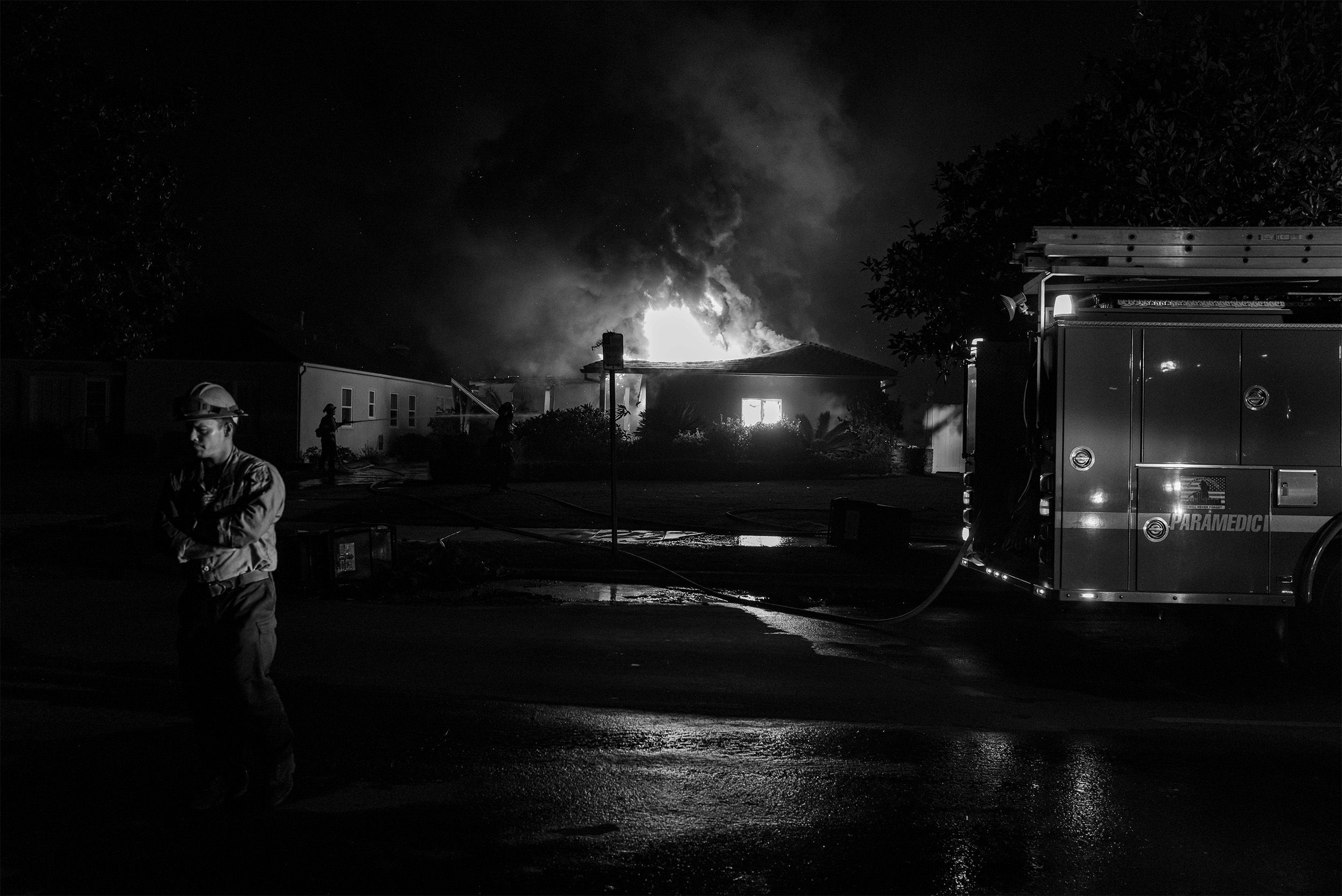
On the morning of January 8th the relentlessly blue sky of Los Angeles had turned a deep red and ash fell from the sky like snowflakes at the onset of a blizzard. To the east the Eaton Fire was tearing through Altadena and to the west the Palisades Fire was making it’s way from the Santa Monica Mountains to the Pacific Palisades, Topanga, and Malibu. Overall there would be a series of 14 fires that would last till the 31st of January. Heightened by drought contains, low humidity, hurricane force winds reaching speed of 100 miles per hour, and a buildup of vegetation from the previous winter these fires would go on to to destroy more than 18,000 structures, kill at least 29 people, and burn over 57,000 acres in total.
“Los Angeles weather is the weather of catastrophe, of apocalypse.” - Joan Didon
Our Editor-in-Chief, Robert LeBlanc, had just made it back to Los Angeles from covering the campaign trail and went directly into the fires to document the attempt at containment. Spending time in the community and working directly with the LAFD.
Los Angeles is known for it’s vastness, a vastness that spans drastic shifts in landscape, communities, and socio-economic diversity. Despite these divides something that has always tied this city together is it’s vulnerability to natural disaster, at all levels we are subject to the inevitability.
“Los Angeles has deliberately put itself in harm’s way. Historic wildfire corridors have been turned into view-lot suburbs, wetland liquefaction zones into marinas, and floodplains into industrial district and housing tracts.” - Mike Davis